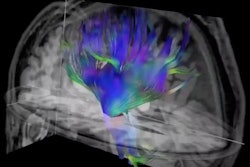
Brain MRI shows that higher white matter hyperintensity (WMH) volumes indicate the coming onset of Alzheimer's disease, according to a study published June 29 in Alzheimer's Research and Therapy.
The findings suggest that tracking WMH volume could help clinicians better identify and care for at-risk patients, particularly those vulnerable to the condition due to carrying a mutation called Presenilin 1 (PSEN1) E280A, wrote a team led by Dr. Dorothee Shoemaker of Massachusetts General Hospital in Boston.
"[Our] results emphasize the relevance of WMH as a core neuroimaging feature of autosomal [gene]-dominant Alzheimer's disease," the group noted.
The progression of increased WMH volume from asymptomatic to symptomatic Alzheimer's isn't clear, according to the investigators. Previous research has explored links between the disease, age, cognitive symptoms, and WMH and has focused on older individuals who also have comorbidities that can confound the results, they explained.
Therefore, in the current study, Shoemaker and colleagues sought to explore any associations between increased WMH volume among younger people with a genetic disposition to Alzheimer's.
To do this, they conducted a study that included 50 participants (mean age 35.8) who were recruited between September 2011 and July 2012 from the Colombian Alzheimer's Prevention Initiative registry. Of the 50 individuals included in the research, 20 were cognitively healthy carriers of the PSEN1 E280A mutation, nine were cognitively impaired carriers, and 21 did not have the mutation at all.
Each individual underwent an MRI exam to assess white matter hyperintensity volume, as well as a lumbar puncture for cerebrospinal fluid collection, a PET scan, and neurological/neuropsychological assessments. The investigators compared WMH volume between the three patient types, and explored any links between WMH, age, and cognitive performance in those patients who carried the Alzheimer's mutation.
The team found that those individuals who carried the Alzheimer's mutation and were cognitively impaired had increased volumes of WMH compared with both cognitively healthy mutation carriers and noncarriers. There was also strong correlation between volume of WMH, cognition, and age among those with the Alzheimer's mutation.
| WMH volume levels by Alzheimer's disease mutation status | |||
| Measure | Non-carriers of Alzheimer's disease mutation | Cognitively healthy mutation carriers | Cognitively impaired mutation carriers |
| White matter hyperintensity volume | 1.07 | 0.85 | 6.37 |
The results demonstrate that WMH volume offers useful information about how Alzheimer's disease may progress, according to the authors.
"These findings suggest that WMH are a key component of autosomal-dominant Alzheimer’s disease that is closely related to the progression of clinical symptoms," they concluded.



.fFmgij6Hin.png?auto=compress%2Cformat&fit=crop&h=100&q=70&w=100)





.fFmgij6Hin.png?auto=compress%2Cformat&fit=crop&h=167&q=70&w=250)











